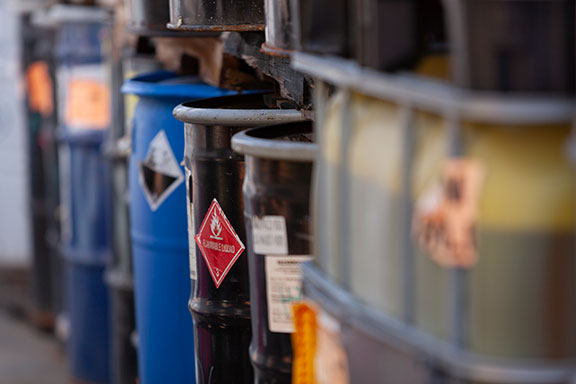November 21, 2019
By Wade Scheel, Director of Governmental Affairs for Stericycle Environmental Solutions
While each year comes with its own new set of challenges, this is especially true when it comes to managing hazardous waste for manufacturing facilities. It can be challenging to keep up with constant changes to federal and state regulations, but it is crucial for facility operators to stay up to date on industry changes and trends to ensure compliance and avoid potential fines.
Approximately 7.6 billion tons of industrial solid waste are generated and disposed of each year in the U.S., meaning there’s no shortage of regulated items accumulated throughout the year that need to be managed and disposed of in a safe and compliant way. With laboratories, health care practices, manufacturing plants and more accruing hazardous chemical waste in both work and storage areas, it is important to take the necessary planning steps to guarantee hazardous waste is properly managed.
While it is recommended to partner with a third-party vendor for year-round compliance, scheduling a clean out near the end or beginning of the year is the perfect time to make sure a facility is meeting local, state and federal regulations. Below are best practices for preparing for an end-of-year or beginning-of-year clean out.
First, plant managers should have an understanding of what materials are defined as hazardous waste. The U.S. Environmental Protection Agency (EPA) regulates hazardous waste under the Resource Conservation & Recovery Act (RCRA) to ensure these wastes are managed in a compliant manner. RCRA mandates that generators of hazardous waste are responsible for the waste from the time of generation to its final destruction and sees that these wastes are managed in ways to protect human health and the environment.
Hazardous waste items have ignitable, corrosive, reactive and toxic characteristics. To determine whether an item is considered hazardous waste, review its safety data sheet (SDS), manufacturer information, label and ingredients.

To ensure proper storage, all hazardous waste should be stored in a dedicated, permanent, clean and organized hazardous waste area.
If a facility decides to schedule a hazardous waste clean out just once a year, it is still highly encouraged to make sure it is staying compliant year-round. While it can be overwhelming to adhere to state and federal regulations, the following best practices can be done to prepare a facility for a yearly clean out:
It should be known that there are many consequences to improperly handling hazardous waste. Facility operators that don’t understand federal, state and local regulations may face environmental contamination, health and safety risks, as well as lawsuits and penalties. While the financial burden of non-compliance is substantial, the negative impact these public fines have on brand perception can be even more damaging.
If a manufacturer decides to forgo routine hazardous waste pickups throughout the year, facility operators should still understand the importance and need to stay compliant without the help of a third-party vendor. The average cost of having a proactive environmental compliance program for hazardous waste varies, but with millions of dollars in potential fines at risk for non-compliant practices and consumer loyalty at stake, organizations must stay up-to-date on any EPA regulatory changes and update their hazardous waste management programs accordingly.

With ever-changing regulations, it’s helpful to have a trained expert come on-site to identify the best practices for waste disposal.
With regulations varying state by state as well as on a federal level, it can be extremely helpful to have a highly trained expert come on-site to identify best practices for managing the waste being generated that can be carried on for the rest of the year. Don’t wait until a city, state or government inspector shows up at the door – be prepared in advance by relying on trained experts who can help evaluate hazardous waste streams and ensure proper compliance.
Additionally, manufacturers should strive to minimize or completely remove the generation of hazardous waste by eliminating as many of its waste streams as possible throughout the year. By managing hazardous waste in a safe and compliant way and – at minimum – scheduling a yearly clean out, facilities are able to ensure the safety of the public, employees, the environment and its overall brand.

Wade Scheel
About the author
Wade Scheel is the Director of Governmental Affairs for Stericycle Environmental Solutions, a leading provider of environmental and regulated waste management solutions. Stericycle’s hazardous waste services support virtually any kind of business that generates any hazardous waste, including auto shops, educational facilities, manufacturers, Fortune 500 retailers and much more.
In this episode, I sat down with Beejan Giga, Director | Partner and Caleb Emerson, Senior Results Manager at Carpedia International. We discussed the insights behind their recent Industry Today article, “Thinking Three Moves Ahead” and together we explored how manufacturers can plan more strategically, align with their suppliers, and build the operational discipline needed to support intentional, sustainable growth. It was a conversation packed with practical perspectives on navigating a fast-changing industry landscape.